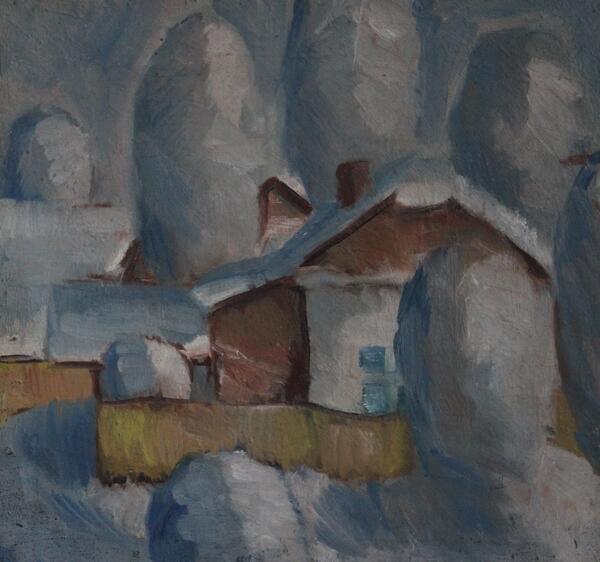Nikolay Sergeevich Pshizov (1941–1991) was born in the city of Morozovsk. In 1960, he entered the Art and Graphic Faculty of the Nekrasov Kostroma State Pedagogical Institute.
At that time, there was a tendency in Soviet art to loosen censorship. Students were presented with an opportunity to get acquainted not only with social realist art, but also with the Russian avant-garde of the early 20th century, as well as the works of Impressionist and post-Impressionist artists.
The young teacher, Vladimir Ilyich Lytnev, instilled a culture of appreciating art in his students and helped them comprehend expressive forms. Not only did he teach professional skills to his students, but also helped them develop their approach to art. Among those who embraced this way of teaching and found their way into painting was Nikolay Pshizov.
Landscape held an important place in his work. The theory of material unity, primordial kinship of man and the cosmos, which Paul Cézanne sought to embody in his work, resonated with the worldview of Nikolay Pshizov as a student. He remained faithful to this vision of the world for the rest of his life.
The landscape “Winter”, which the artist painted in the early 1960s, is an embodiment of these ideas. This is one of Pshizov’s early works. The artist depicted a small one-story white and brown house surrounded by snow-covered rooftops and trees behind a low fence of a yellowish color.
This landscape very accurately conveyed the state of winter. There is a sense of silence and stillness in this work. The trees and rooftops are frozen under a heavy layer of snow. The high snow drifts bind them together from all sides until everything turns into a seemingly monolithic mass that exudes coldness.
The restrained exquisite
color palette, subtle transitions of silver-gray, bluish, milky-white hues with
the inclusion of brownish and ochre fragments produce a calm and slightly
gloomy impression. “Light and purity of perception of the objective world, ” was
how one of his friends, the artist Yevgeny Vyacheslavovich Radchenko,
characterized the work of Nikolay Pshizov.




